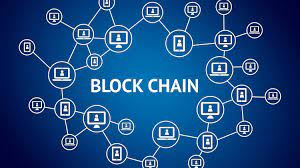Blockchain is a decentralized and distributed digital ledger that records transactions across multiple computers or nodes. It is a foundational technology behind cryptocurrencies like Bitcoin, but its applications extend beyond digital currencies to various industries and sectors.
At its core, a blockchain is a chain of blocks, where each block contains a list of transactions. These transactions can represent exchanges of digital assets, ownership records, or any other form of data. Each block is linked to the previous block using a unique cryptographic hash, forming a chain of blocks that creates a permanent and tamper-resistant record of transactions.
The key features and components of a blockchain are as follows:
- Decentralization: Rather than being controlled by a central authority, a blockchain operates on a network of computers (nodes) that collectively maintain and validate the blockchain. This decentralized structure eliminates the need for intermediaries and provides transparency and trust among participants.
- Distributed Ledger: The blockchain ledger is distributed across multiple nodes in the network. Each node maintains a copy of the entire blockchain, ensuring that all participants have access to the same information. This distribution enhances security, as tampering with a single node does not affect the entire blockchain.
- Consensus Mechanism: To agree on the validity of transactions and maintain the integrity of the blockchain, consensus mechanisms are used. Consensus mechanisms ensure that all nodes in the network reach a consensus on the order and validity of transactions. Popular consensus mechanisms include Proof of Work (PoW), Proof of Stake (PoS), and Practical Byzantine Fault Tolerance (PBFT).
- Cryptography: Blockchain utilizes cryptographic techniques to secure transactions and maintain data integrity. Cryptographic hash functions are used to create unique identifiers for each block and to link blocks together. Digital signatures ensure that transactions are authenticated and cannot be tampered with.
- Immutability: Once a transaction is recorded on the blockchain and added to a block, it is extremely difficult to alter or delete. The use of cryptographic hashes and the distributed nature of the blockchain make it computationally infeasible to modify past transactions, providing a high level of immutability and auditability.
- Smart Contracts: Smart contracts are self-executing contracts with predefined rules stored on the blockchain. They automatically execute transactions and enforce the agreed-upon terms without the need for intermediaries. Smart contracts enable automation, programmability, and the creation of decentralized applications (DApps) on the blockchain.
- Security and Integrity: Blockchain achieves security through cryptographic techniques. Each transaction or data entry is securely encrypted and linked to the previous entry in the blockchain using digital signatures. This cryptographic hashing mechanism ensures the integrity and immutability of the data.
- Transparency and Trust: The blockchain ledger is transparent, meaning that all network participants can view and verify the transactions or data entries. This transparency fosters trust and accountability, as it becomes difficult to engage in fraudulent activities without detection.
- Consensus Mechanism: To maintain the integrity and agreement among all network participants, blockchain utilizes a consensus mechanism. This mechanism ensures that all nodes in the network agree on the validity of transactions and the order in which they are added to the blockchain.
Blockchain technology offers several advantages, including increased transparency, enhanced security, reduced costs, and the potential for disintermediation in various industries. It has applications beyond cryptocurrencies, such as supply chain management, healthcare, finance, voting systems, and more.
As blockchain continues to evolve, new advancements are being made to address scalability, privacy, and interoperability challenges. These advancements include layer-two solutions, privacy-preserving techniques, and interoperability protocols, to name a few.
Overall, blockchain is a powerful and transformative technology that has the potential to revolutionize how transactions and data are recorded, verified, and secured in a wide range of applications.
